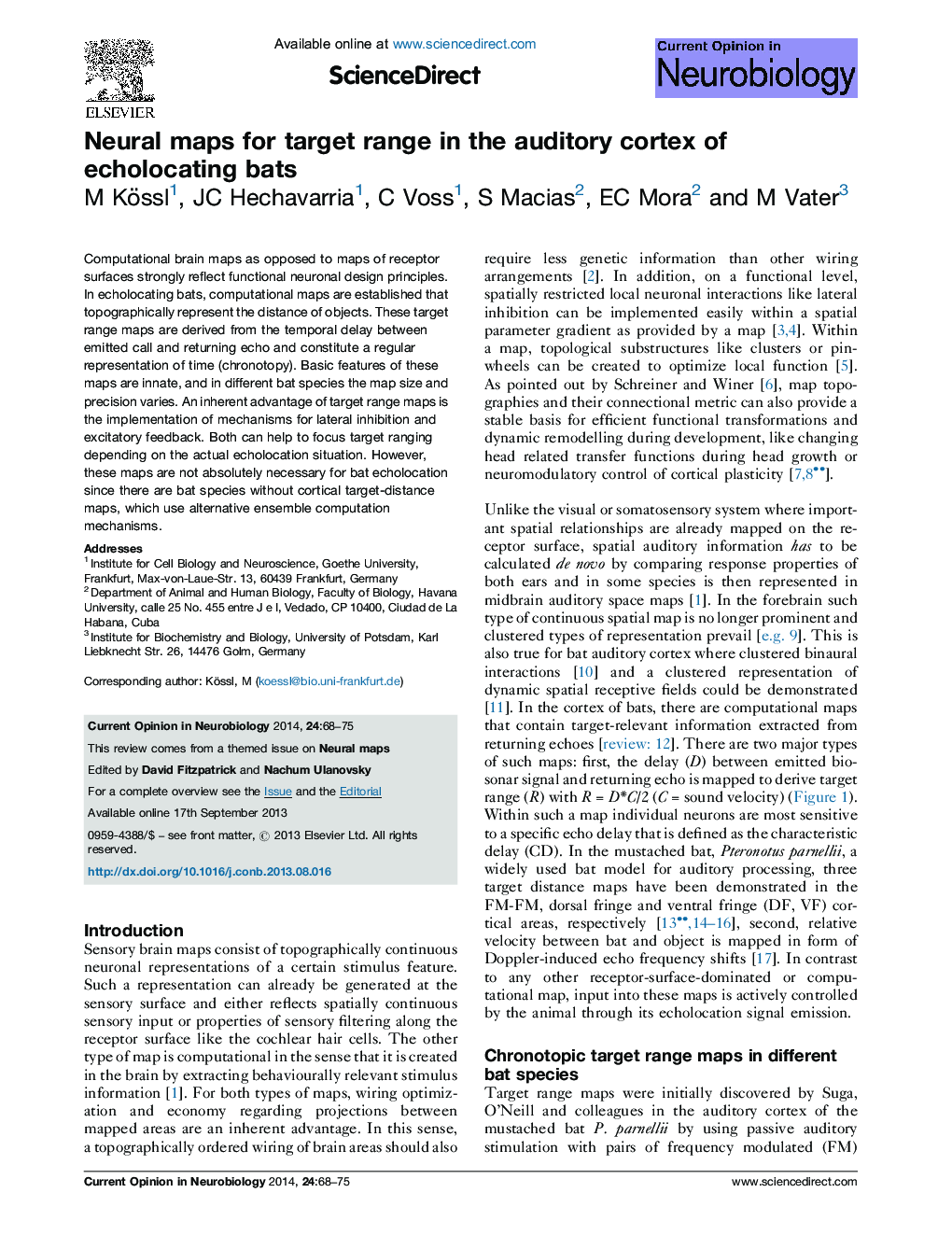| Article ID | Journal | Published Year | Pages | File Type |
|---|---|---|---|---|
| 6266938 | Current Opinion in Neurobiology | 2014 | 8 Pages |
â¢Target-range maps are based on echo delay time and are purely computational.â¢They constitute a chronotopic representation on the cortical surface.â¢They promote efficient lateral inhibition mechanisms and neuronal plasticity.â¢Cortical chronotopy has evolved convergently in certain old and new world bat species.â¢Basic features of chronotopy and neuronal delay-tuning are established prenatally.
Computational brain maps as opposed to maps of receptor surfaces strongly reflect functional neuronal design principles. In echolocating bats, computational maps are established that topographically represent the distance of objects. These target range maps are derived from the temporal delay between emitted call and returning echo and constitute a regular representation of time (chronotopy). Basic features of these maps are innate, and in different bat species the map size and precision varies. An inherent advantage of target range maps is the implementation of mechanisms for lateral inhibition and excitatory feedback. Both can help to focus target ranging depending on the actual echolocation situation. However, these maps are not absolutely necessary for bat echolocation since there are bat species without cortical target-distance maps, which use alternative ensemble computation mechanisms.
